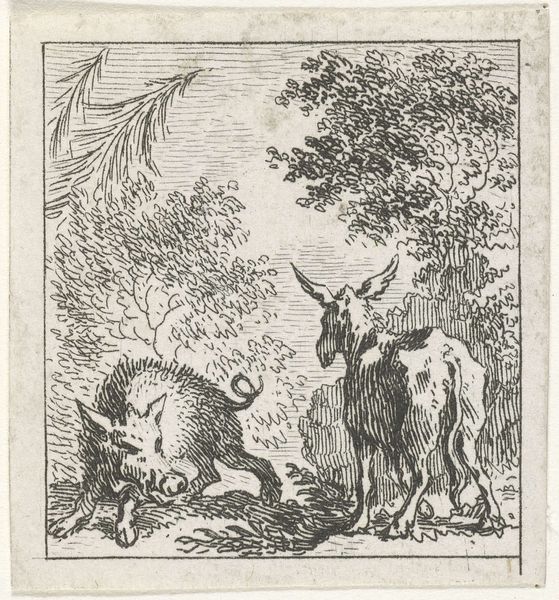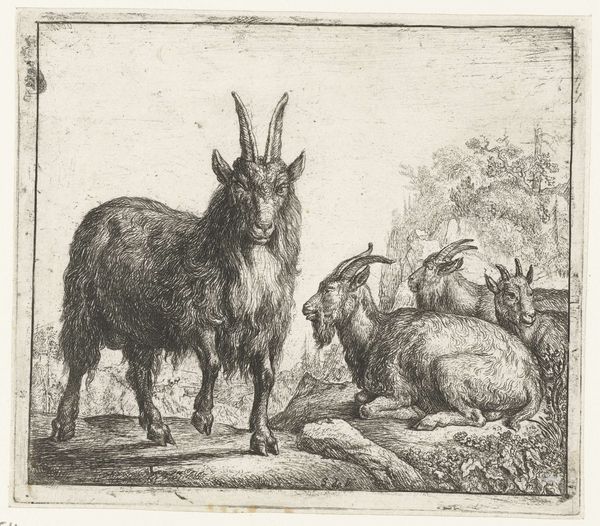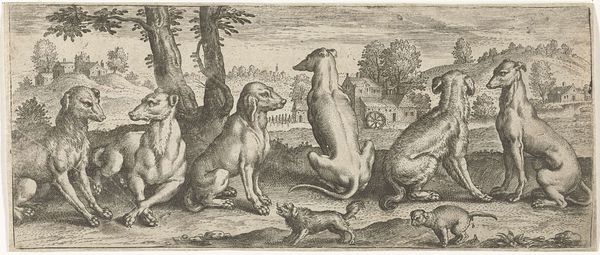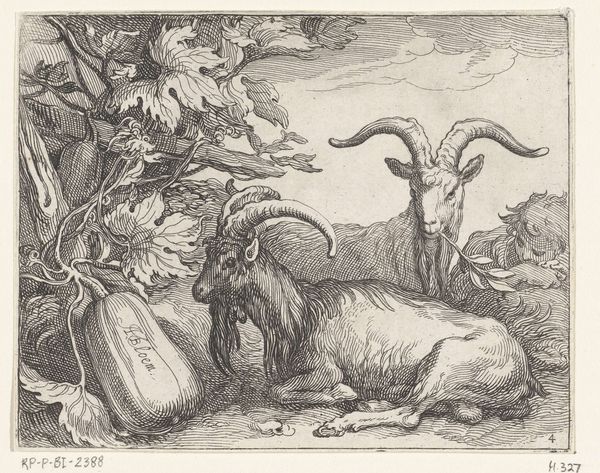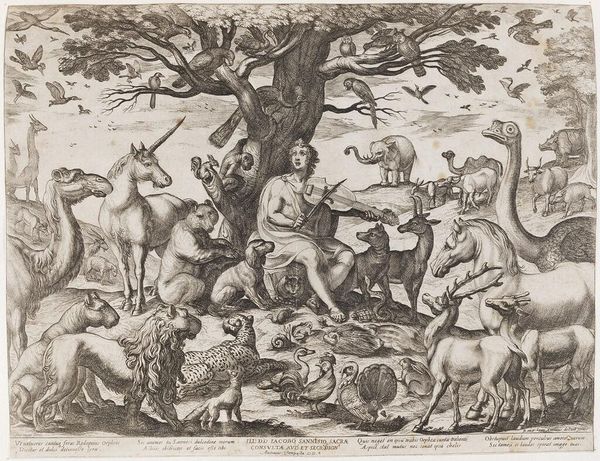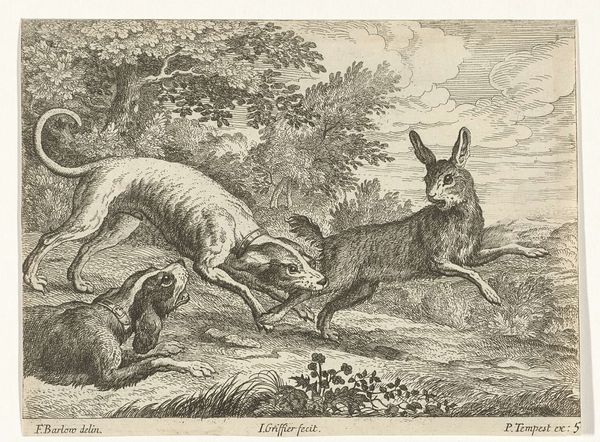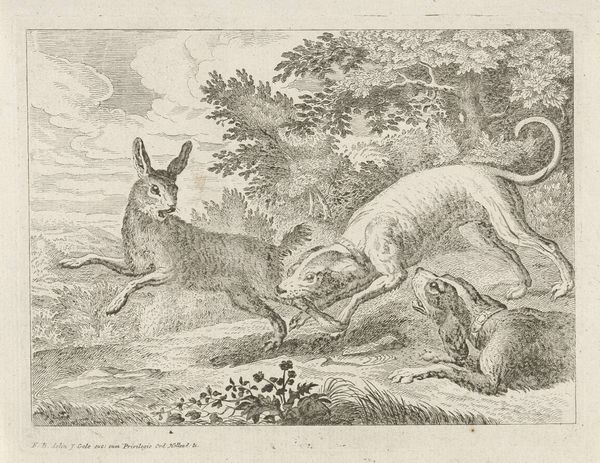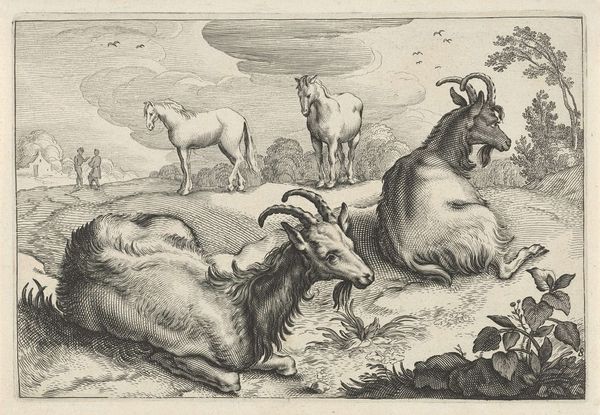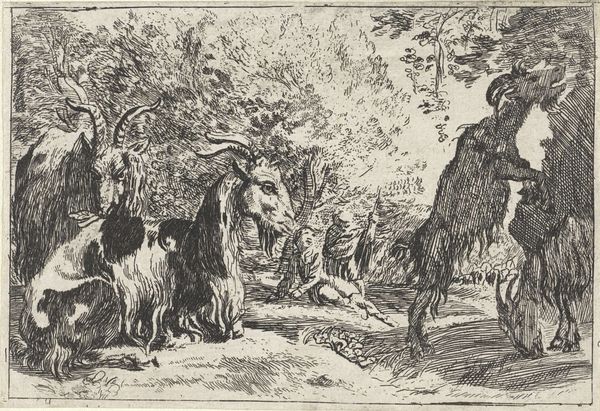
engraving
#
baroque
#
pen illustration
#
pen sketch
#
landscape
#
figuration
#
genre-painting
#
engraving
#
realism
Dimensions: height 111 mm, width 164 mm
Copyright: Rijks Museum: Open Domain
Editor: So this engraving is called “Geiten,” or “Goats,” and it’s from somewhere between 1636 and 1705 by an anonymous artist, currently housed at the Rijksmuseum. The detail is incredible for such a small print; it’s like peering into a whole miniature world. What do you see in this piece, and how do you connect it to the time it was made? Curator: This engraving, ostensibly a pastoral scene, reveals much about 17th-century societal structures and hierarchies. Look closely. The goats aren't merely animals in a field; they are imbued with a presence, a sense of being observed, perhaps even judged. Consider the shepherd figures; who were these individuals within their social landscape, and what narratives were intentionally or unintentionally woven into depictions of rural life during that period? Editor: That's interesting. I was mainly drawn to the composition and the textures, but I hadn’t considered it in terms of social dynamics. Were these idyllic rural scenes a common theme at the time? Curator: Exactly. Such scenes were incredibly popular. However, consider how class and labor are represented or, more likely, erased within these romanticized settings. These images provided an escape for urban elites, offering a sanitized vision of the countryside that masked the realities of poverty and exploitation faced by many. Can art truly divorce itself from the prevailing societal inequalities, or does it inherently reflect and reinforce those power dynamics? Editor: I see what you mean. It’s easy to get lost in the technique, but digging deeper reveals a more complicated story. Curator: Precisely. It’s about excavating those buried narratives and questioning whose stories are told, whose are omitted, and what impact these representations have on our understanding of the past, and indeed, the present. Editor: I'll definitely look at these landscapes with a more critical eye from now on. Thanks for offering that context. Curator: My pleasure. Remember, art isn’t created in a vacuum; it is always speaking to and shaped by its historical and social moment. Keep asking those tough questions.
Comments
No comments
Be the first to comment and join the conversation on the ultimate creative platform.

